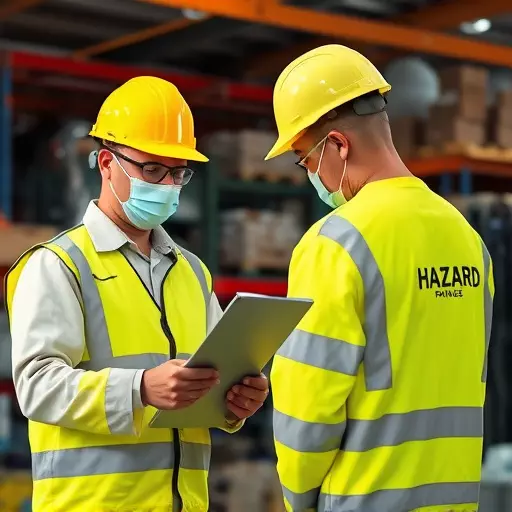Personal protective equipment (PPE) is an indispensable component of workplace safety, safeguarding employees from physical, chemical, and biological hazards. Onsite EHS services play a crucial role by conducting comprehensive workplace safety audits, identifying hazards, and assessing risks, enabling employers to select the most appropriate PPE tailored to specific tasks and environments. This proactive approach boosts employee safety, ensures compliance with industry standards, and fosters a safer, more productive work environment.
Personal Protective Equipment (PPE) is an essential component of modern workplace safety, offering crucial protection against a myriad of hazards. This article delves into the comprehensive management of PPE, covering its role, types, and industry-specific requirements. We explore effective strategies, including implementing onsite EHS services, conducting thorough workplace safety audits, and identifying hazards via risk assessments. By mastering these tactics, organizations can ensure optimal PPE utilization, maintenance, and employee well-being.
- Understanding Personal Protective Equipment (PPE): Its Role and Types
- – Definition and importance of PPE
- – Different types of PPE: From head-to-toe protection
Understanding Personal Protective Equipment (PPE): Its Role and Types

Personal Protective Equipment (PPE) is an essential component of any comprehensive workplace safety strategy, especially in industries where employees face various risks and hazards. It refers to specialized clothing and gear designed to safeguard workers against potential dangers that cannot be eliminated or controlled through other means. PPE serves as a critical line of defense, acting as a barrier between the worker and hazardous substances, conditions, or activities.
The role of PPE is multifaceted. It includes protecting against physical hazards like falling objects, sharp objects, and extreme temperatures, as well as mitigating risks associated with chemical, biological, or ergonomic factors. Various types of PPE exist, each tailored to specific tasks and environments, such as hard hats for head protection, safety goggles for eye safety, respirators for respiratory protection, high-visibility vests for enhancing visibility, and protective clothing for skin shielding. Onsite EHS services often play a pivotal role in ensuring proper PPE selection, fitting, training, and maintenance through regular workplace safety audits and hazard identification and risk assessment processes.
– Definition and importance of PPE

Personal protective equipment (PPE) is a vital component of any workplace safety strategy. It refers to garments or devices designed to safeguard workers from hazards, including physical, chemical, and biological dangers present in various industries. The importance of PPE cannot be overstated, especially in ensuring the well-being of employees and compliance with regulatory standards.
Onsite EHS services play a crucial role in effective PPE management. These services conduct workplace safety audits and hazard identification and risk assessments to pinpoint potential risks. By analyzing work environments, they help employers select appropriate PPE for different tasks, ensuring maximum protection. Regular audits also allow for continuous improvement in workplace safety practices, making it an essential aspect of any organization’s commitment to its employees’ well-being.
– Different types of PPE: From head-to-toe protection

Personal protective equipment (PPE) is an essential component of any workplace safety strategy. It encompasses a wide range of items designed to safeguard workers from various hazards, offering head-to-toe protection. From hard hats and safety goggles to high-visibility vests and heavy-duty gloves, each piece serves a specific purpose. Onsite EHS services play a pivotal role in ensuring proper PPE selection and implementation, aligning with the principles of hazard identification and risk assessment.
Effective management of PPE involves regular workplace safety audits that assess the need for different types of protection based on the tasks performed and potential risks present. This proactive approach not only enhances employee safety but also ensures compliance with industry standards, ultimately contributing to a safer and more productive work environment.


